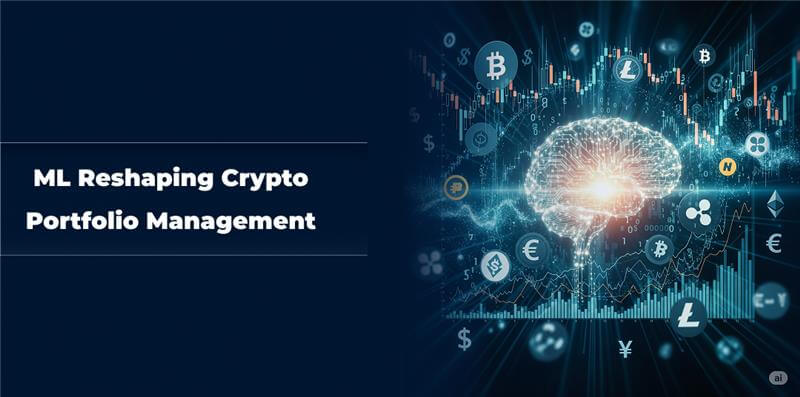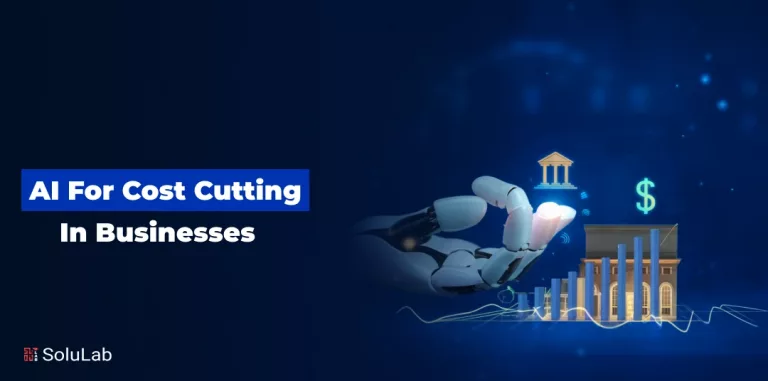
67% of Gen Z traders activated at least one AI-powered trading bot in Q2 2025. This isn’t a small group of tech enthusiasts experimenting with new tools. It represents an entire generation fundamentally changing how they approach portfolio management.
This change is a part of a larger story. The market for AI trading reached $24.53 billion in 2025. Today, it seems to be not just adoption but integration. These tools have gone from an innovation to a necessity based on their performance, not just a marketing campaign.
According to Binance.com Co-Founder Yi He, “Whether it’s the Industrial Revolution or the rise of the Internet, every wave of innovation starts with a speculative frenzy. But that doesn’t mean there aren’t valuable products created in the process.” We’re seeing exactly that—valuable products emerging from the current crypto innovation cycle.
Over the next few minutes, we’ll explore five key areas that reveal how machine learning is reshaping portfolio management. We’ll examine why an entire generation has embraced this technology, what the performance data actually shows, how it’s changing trader behavior, the market dynamics driving sophistication, and what this means for your portfolio strategy.
The numbers tell a compelling story. The question is whether you’re ready to listen to them.
Why Generation Alpha’s Older Siblings Are All In
The statistics around Gen Z adoption paint a picture that’s hard to ignore. Not only did 67% activate AI bots in Q2 2025, but they accounted for 60% of all AI bot activations across major platforms. More telling? They engage with these tools an average of 11.4 days per month—more than double the frequency of traders over 30. This isn’t random preference but strategic behavior.
Traders belonging to Generation Z exhibit advanced utilization profiles. 73% of them will strategically turn on the AI bots during choppy markets and turn them off during quiet periods. They aren’t simply set and forget users, they are active managers of their automated systems. This selective use indicates to me that they understand the capabilities and limitations of these tools even more than most give them credit.
The comfort level of using AI bots makes sense when you consider this generation’s relationship with algorithmically driven decision-making. Generation Z has grown up with recommendation engines, auto-feed, AI-driven experiences. Trading bots represent a natural extension of these digital natives, not a new innovation they must adjust to.
But there’s more going on. These traders aren’t simply comfortable with automation, they are demanding it. Efficiency of time is a major driver of this adoption for many users. Managing a portfolio manually requires presence of mind, emotional bandwidth, and physical availability. AI bots work 24/7 and do not require you give up sleep and engage in weekend monitoring.
There is a generational gap evident in adoption and usage patterns. Older traders often use AI bots to complement their existing humans-in-the-loop strategies, whereas Gen Z treats bots as essential tools and build their entire approach around automated execution with oversight of their strategic work.
This difference in behavioral patterns exposes an important question. Are these rates of use because they are getting better results or is it simply a preference for the technology?
When Robots Beat Humans at Their Own Game
The performance data provides a clear answer. A comprehensive 90-day study by DaviddTech examining 26 different AI trading bots revealed results that would make any portfolio manager take notice. The standout performer? A leveraged DCA strategy that achieved 193% ROI over six months, turning $376.50 into $730 profit using 20x leverage on a $JUP/USDT pair.
But high-risk, high-reward strategies tell only part of the story.
Conservative approaches showed equally impressive consistency. BTC-focused bots delivered 12.8% returns in just 30 days with a perfect 100% success rate across 36 closed deals. These weren’t market-timing miracles or lucky streaks—they were systematic approaches that compound small advantages over time.
The most revealing statistic? AI users experienced 47% fewer panic sell-offs compared to manual traders during volatile market conditions. This emotional stability translates directly into performance improvements. In volatile markets, human traders often behave irrationally and make bad decisions based on fear or greed. Bots will follow pre-planned strategy sets no matter what the mood of the market.
Speed is important too. AI systems look at price data to execute and monitor trades in milliseconds, taking advantage of opportunities faster than human traders. They never hesitate, second-guess themselves, or delay executing trades based on emotion. This mechanical accuracy combined with availability translates into a substantial advantage in rapid-changing crypto markets.
The projected market size for crypto based on data from the cryptocurrency exchange Binance estimates the crypto market cap could reach $5 trillion due to growing demand from institutions, ex- CEO Changpeng Zhao has said. The combination of the expansion of the opportunity set provides the context, and where AI bots operate—with larger markets, higher complexity, and better potential for harvesting algorithmic edges.
The performance edge isn’t just about faster execution. It’s about consistent strategy application over time, emotional discipline during volatile periods, and systematic risk management that humans struggle to maintain manually.
Actually, that last point deserves more attention than most people give it.
The Psychology of Letting Machines Handle Your Money
Something interesting happens when you delegate trading decisions to algorithms. The psychological shift from active trader to portfolio strategist changes not just how you interact with markets, but how you think about investment management entirely.
Users report sleeping better. That’s not hyperbole—it’s a practical benefit of continuous monitoring. Markets don’t respect your schedule, and significant moves often happen outside traditional trading hours. AI bots capture these opportunities while you focus on other aspects of your life.
It’s not just the improvement in sleep quality that provides emotional advantages. Manual trading often creates a cycle of looking, checking, second-guessing, and really just reacting. When you’re actively managing positions, every price deviation feels deeply personal. AI bots disrupt that cycle by eliminating the emotional relationship with each trade.
That emotional distance is beneficial during periods of market stress. Human traders historically make their worst decisions during periods of heightened volatility when emotional intensity is heightened, and time pressure is an issue. AI systems implement the same analysis of any situation regardless of market conditions, executing their own strategies based on data and not feelings.
The role shift from trader to strategist brings its own challenges. You still need to make important decisions about risk parameters, strategy selection, and market allocation. But these decisions happen at a higher level, focusing on overall portfolio construction rather than individual trade execution.
Users develop new monitoring habits. Instead of watching price movements throughout the day, they review performance metrics, adjust parameters, and analyze results. This shift toward strategic oversight rather than tactical execution often leads to better long-term outcomes.
Every individual experiences the trust-building process differently. Some users begin with low dollar amounts and after some time, begin to grow their exposure with their trust building. Others want to fully test the environment in demo mode to understand all aspects before committing their own capital. Either way, this hesitancy is often healthy skepticism towards algorithms generating autonomous trading decisions without human oversight.
When Markets Get Smarter, So Do the Tools
By 2025, both retail and institutional segments had embraced widespread adoption driven by transformations in technology that alleviated the previous layers of limitations. Now, today’s AI trading platforms have sophisticated features that previously were experimental ideas just a few years ago:
– AI signal integration which might process News, social sentiment, as well as technical indicators all at the same time
– Natural language processing which understands and interprets what’s popular in market commentary, as well as forthcoming news events
– Better user interfaces with better dashboards and multi-account capabilities
– Cross-platform capabilities, and access to a strong API for a seamless portfolio management experience
According to Binance research, Decentralized Finance (DeFi) had also gone institutional from early adoption to real world assets. Although it appears that TVL remained steady at $151.5B, user activity was at a whopping 240% year-over-year. Increasingly complex environments clearly have legitimized AI systems tasked with processing multiple data streams, identifying patterns across correlated connected markets, and then executing complex strategies for trades that would overwhelm human traders.
The technology improvements do not stop with more sophisticated tools. We’re seeing entire ecosystems develop around AI-powered portfolio management. Platforms now offer strategy marketplaces where users can access proven algorithms, backtesting environments for strategy development, and social features that allow strategy sharing and collaborative development.
Institutional adoption has accelerated capability development. Professional traders demand reliability, transparency, and risk management features that benefit retail users. This institutional focus has improved platform stability, regulatory compliance, and overall user experience.
The feedback loop between market complexity and tool sophistication creates an interesting dynamic. As markets become more efficient and competitive, AI systems must become more sophisticated to maintain advantages. This relentless cycle of improvement serves to benefit users by improved performance, more features, and enhanced reliability.
Integration capabilities have become increasingly essential. Today’s AI trading bots do not work in isolation; they are linked to portfolio management systems, tax software, and analytic tools to support complete wealth management.
What This Actually Means for Your Portfolio (And Your Sanity)
The practical implications of AI-powered portfolio management extend beyond performance metrics. These tools change how you approach risk management, time allocation, and strategic planning. But they’re not magic solutions that eliminate all challenges.
Risk management is becoming increasingly organized, but you will need new capabilities. You will need to learn how to implement proper parameters, monitor system performance, and identify where human intervention becomes necessary. While AI bots are great at executing known strategies, they will not have the ability to adjust to unique market scenarios where human intervention might be required.
The platform you select is of great importance. Not all platforms are equal, and when selecting the appropriate platform, it is essential to evaluate issues such as transparency of the AI strategies being executed, backtesting to evaluate the results of the strategy before putting real money into the market, risk management features, and integration with a brokerage account. The least expensive option rarely translates into the best overall value in the long run.
Integration with existing strategies requires careful planning. AI bots work best when they complement rather than replace your overall investment approach. This might mean using them for specific market segments, particular trading strategies, or as portfolio completion tools rather than comprehensive solutions.
Monitoring and override capabilities prove essential. Even the most sophisticated AI systems require human oversight for parameter adjustment, strategy selection, and risk management. The goal isn’t to eliminate human judgment but to enhance it through better execution and emotional discipline.
The learning process differs based on the task’s complexity. Bots that import dollar-cost averaging require very little setup and maintenance. Advanced tasks, such as arbitrage or market-making strategies, require a more thorough understanding of market dynamics and risk protocol.
Your sanity is protected from the emotional drain of having to make decisions constantly. However, it does require you to trust the systems you are utilizing with your capital, which presents a different psychological conflict. You will develop this trust through incremental exposure and thorough testing, which allows you to bridge the gap between comfort and automation.
The Shift in Your Trading Account
The most successful users treat AI bots as sophisticated tools that extend their analytical capabilities rather than autonomous decision-makers.
The subtle aspect of this shift might be its most significant characteristic. Unlike flashy technological breakthroughs that capture headlines, AI-powered portfolio management is becoming embedded in standard investment practices. It’s becoming normal and that normalization represents the true measure of technological adoption.
Your portfolio management approach will likely include AI components within the next few years, whether through direct bot usage or AI-enhanced platform features. The question is whether you’ll be an early adopter shaping this development or a late adopter adjusting to established norms.
The conversation has shifted from “Should I use AI trading bots?” to “Which AI trading approach fits my strategy?” That shift represents the practical triumph of useful technology over technological spectacle.




